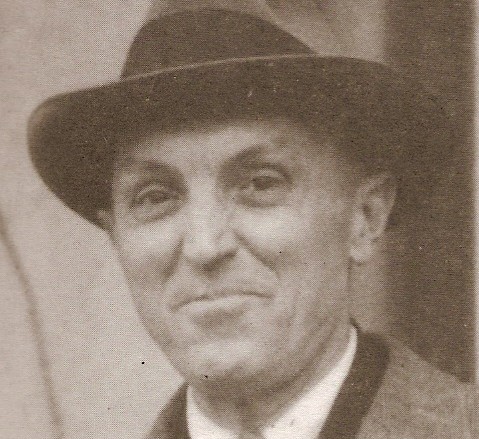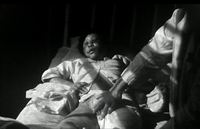The Camera as a Weapon
- By Peter Harmsen
- 15 March, 2014
- No Comments
 When the Japanese army marched into the Chinese capital Nanjing in December 1937, only a small number of foreign residents had stayed behind. One of them was John Gillespie Magee, an American citizen and a minister at an Episcopal mission. In the terrible days that followed, he used his 16mm camera to record the atrocities committed by the conquerors as they were unleashed on the city’s defenseless population, mostly civilians. Their actions, known now as the Rape of Nanjing, cost the lives of up to 300,000 and have come to stand as the dark culmination of Japanese aggression in Asia in the first half of the 20th century.
When the Japanese army marched into the Chinese capital Nanjing in December 1937, only a small number of foreign residents had stayed behind. One of them was John Gillespie Magee, an American citizen and a minister at an Episcopal mission. In the terrible days that followed, he used his 16mm camera to record the atrocities committed by the conquerors as they were unleashed on the city’s defenseless population, mostly civilians. Their actions, known now as the Rape of Nanjing, cost the lives of up to 300,000 and have come to stand as the dark culmination of Japanese aggression in Asia in the first half of the 20th century.
Magee, 53 years old at the time, was deeply involved in relief work for the people who fell victim to the Japanese rampage, but just like John Rabe, a German now famous for his efforts to save lives, he felt a responsibility to create a record for the future. While Rabe kept a diary, Magee worked with film. He couldn’t record the worst scenes that he witnessed as he feared detection by the Japanese, which would mean immediate confíscation of his camera and the loss of his main means of securing evidence of the gruesome acts being committed.
Nevertheless, the result of his efforts was black-and-white footage that now stands as key evidence that horrific atrocities indeed took place in Nanjing in late 1937 and early 1938. Key segments are included in this low-key but still powerful documentary, which also contains scenes of missionary life recorded by Magee in happier days before the Japanese invasion. But the central part is barely watchable footage of victims of the Japanese – men, women and children, with horrific wounds inflicted by bayonet, iron bar and burning gasoline:
Some of the footage seems not to be from Nanjing. For example, a group of Japanese soldiers posing with obsolete-looking artillery pieces, beginning at 6:37, are most likely filmed at the Wusong fortress north of Shanghai. Probably Magee, who had been granted Japanese permission to carry a camera, was a frequent traveler in the area in his capacity as a high-ranking Red Cross official. This in fact makes Magee’s record even more valuable, as testimony to the death and destruction wrought not just on Nanjing but on the entire lower Yangtze region.
A German diplomat, Georg Rosen, had a copy of Magee’s film smuggled to Berlin with a request that it be shown to top Nazi officials. Predictably, the film, even if it was shown, didn’t make any difference, as Hitler’s regime at the time was transitioning from seeing China as its chief anti-Soviet ally in Asia to preferring Japan.

Li Xiuying, survivor of Nanjing massacre, lies in bed in Gulou Hospital, Nanjing. Still from Magee’s film
Another copy taken to the United States had more impact. George Fitch, another American missionary who had seen the horrible events in Nanjing, showed it to senators, Army officers and Red Cross officials, without ever disclosing who had shot the footage. Magee was still in Nanjing, now under Japanese occupation, and his life would be in severe danger if word came out. Stills from the documentary were also published in Life magazine. It is likely that Fitch may have helped form American opinion about events in China, but physically exhausted he had to give up his one-man campaign before the end of 1938.
For decades afterwards, a complete copy of Magee’s film was not available to the public. Some Nanjing deniers even said it didn’t exist. However, the search heated up after a report on the film authored by Rosen, the German diplomat, surfaced following German reunification in 1990. Eventually, a copy was traced to Magee’s son, David Magee. Available now in its entirety, it says more about the Nanjing massacre than millions of words.
“Being a symbol… [it is] vulnerable to mythology,” Anglo-Dutch writer Ian Buruma wrote of the Nanjing massacre in his book The Wages of Guilt: Memories of War in Germany and Japan. There is a risk that fact and fiction get mixed. “That is why the film record of John Magee matters so much to all who are interested in the documentation of a terrible instance of atrocities against civilians,” argued Tzuping Shao, a former president of the Alliance in Memory of Victims of the Nanjing Massacre, writing in The Historical Journal of Film, Radio and Television.



 Copyright © 2024
Copyright © 2024
Leave a Reply